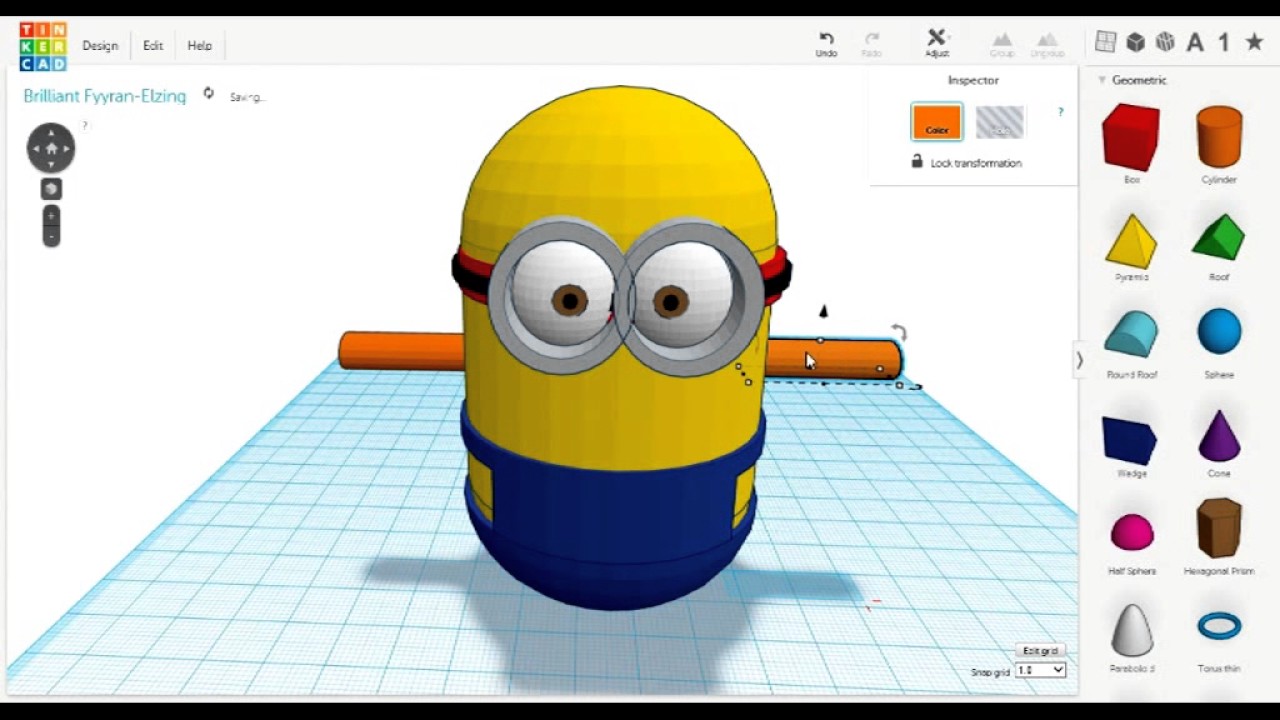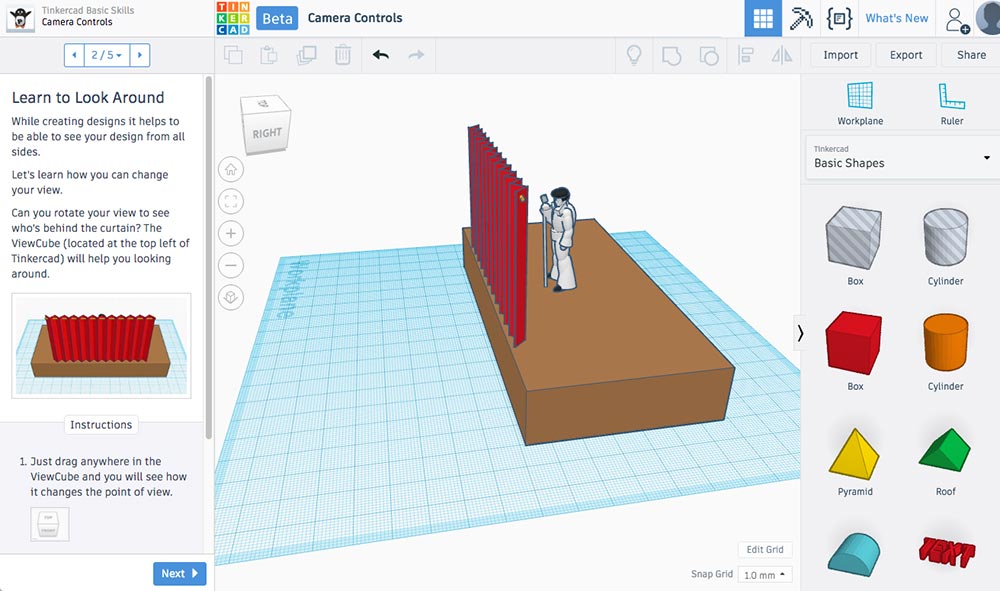
Users can create their own 3D models, modify models made by other users, or share models created by other users. Menu is created with simplicity in mind, which is why it’s always available on top of screen. Menu is accessible through top bar so users can easily access different features, upload files, create objects. Under menu there are different tools to modify existing three-dimensional shapes. Menu has a variety of functions that will help you to create a model. Grid is a virtual workspace that allows users to deal with shapes, modify them, then export them as a 3D object. Interface consists of a three-dimensional grid with a menu on left side. Interface is very intuitive and easy to learn how to use. It allows you to work with a strong sense of what your are going to do, ability to quickly access tools you need. Interface download Tinkercad is a clean and simple.



Toolbar provides basic functions to edit and change already existing models, make up new models and publish them. On left side there is a toolbar with following buttons: Edit, New, Upload, Publish, and Share. On top there is a menu with a list of models to choose from, a list of shapes and a window with 3D model. Interface is very simple and straightforward. Application is available to use for free, but it is possible to upgrade to Pro for a monthly fee. Software Tinkercad download has a huge library of shapes, which makes it really easy to build models. Application is available on browser, which is accessible by everyone. You can create 3D models from scratch or from a template. The only tricky thing is the use of fold_left to apply an anonymous (or lambda, for the LISPers out there) addition function across the contents of the list containing the individual volumes of the objects in the modelspace.Tinkercad is a free, web-based 3D modeling application that is as easy as playing with Lego. As usual, committing is cheaper than aborting Seq.untyped_to_list ms |> List.map getVolume |> sumĮd.WriteMessage( "\nTotal volume: " + vol.ToString())

And here's where we plug everything together. Use fold_left in a partial application to find | :? Solid3d -> (obj :?> Solid3d).MassProperties.Volume Let obj = tr.GetObject(x,OpenMode.ForRead) Note the valid use of tr, as it is in scope the volume of a 3D solid, if it happens to be one A function that accepts an ObjectId and returns Get appropriately-typed BlockTable and BTRs "use" has the same effect as "using" in C#ĭb.TransactionManager.StartTransaction() Let's get the usual helpful AutoCAD objectsĪ


 0 kommentar(er)
0 kommentar(er)
